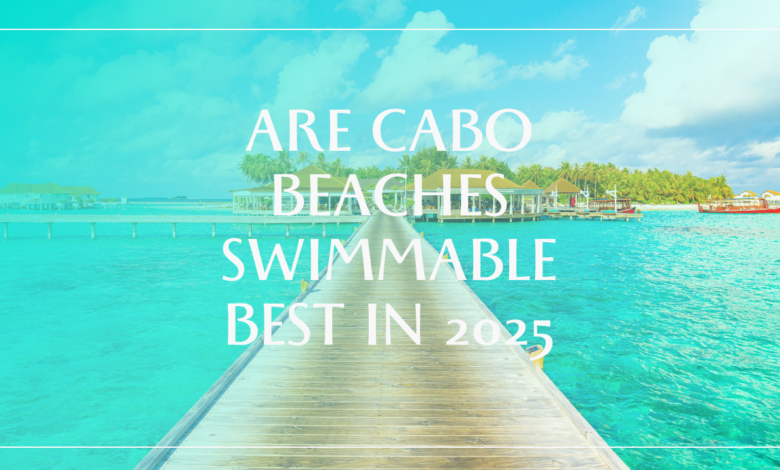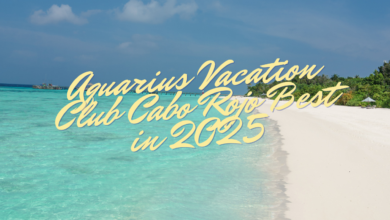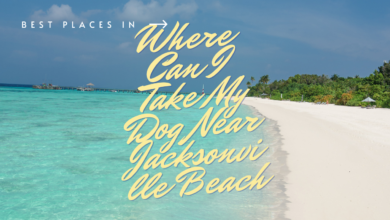
Find out which Are Cabo Beaches Swimmable, what safety measures should be taken, and which Los Cabos beaches are the best for swimming. Find expert recommendations and local knowledge about Los Cabos Beaches.
Introduction
Los Cabos, Mexico’s Baja California Peninsula’s southernmost region, is a breathtaking coastline aiming to please any visitor with its exquisite sandy beaches and clean blue water. The singular location of the region, where the Cortez sea meets the Pacific ocean, offers a wide but difficult coastline for beach lovers. It is also essential for the visitors in planning their holidays to know how swimmable the beaches in Cabo are. In this guide, we try to cover every aspect such as swimming conditions, safety tips and the best places for watersports in Los Cabos.
Are Cabo Beaches Swimmable?
Assessing the swimmability of Cabo’s beaches is an intricate issue that calls for an appreciation of the different factors that influence oceanic conditions in this particular region. There are some beaches with very calm seas which make swimming easy and ideal while there are other beaches with very high waves which pose a significant danger rendering water sports impractical. The main difference comes from the geographical location of the beaches in relation to where the Pacific Ocean meets the Gulf of California.
Swim’s side is the calmer and more protected Sea of Cortez and because of this the swimming conditions are better. These beaches often have less aggressive swells, more stable conditions, and clearer water. Still, even these calm looking waters can be seasonally altered, and therefore can be less suitable for swimming. The waves seen during these winter months might result in more currents and low water temperatures, whereas the summers are mostly hot and smooth, creating favorable conditions for swimming.
Previous beaches have relatively tamer conditions, because of the large waves and heavy currents and backwaves that shores that face the Pacific Ocean tend to have. Such paths are delightful for beach walking and taking pictures but entail very limiting apprehensions considering water exercises. Such places or beaches may also be prone to sudden oceanic activity hence continuous scanning of one’s vicinity is required for safe mobility.
Why are the beaches in Cabo not swimmable?
To appreciate why certain beaches in Cabo are classified as non-swimmable, a handful of environmental and geographical factors needs to be studied. The effect is primarily due to the fact that there are two great bodies of water meeting at one point creating some enormous changing physical forces. The interaction of water here borders dangerously on the extreme even for those who swim competitively.
One of the most evident hazards is the strong undertow which is common in beaches facing the Pacific Ocean. These currents are so powerful that they can easily drag anyone in the water far and away from the beach posing danger of not being able to swim back to the shore. It is aggravated by the fact that most people do not see an underwater whirlpool creating a strong undertow which is a danger zone for many tourists.
Tourism season has a significant impact on the maintenance of the cleanliness of the beaches. In the winter season, the northern swells are capable of producing massive waves and serious currents which heighten the risk of even the normally placid beaches. Seasons change and so does the wind making waves of different heights and currents of varied strengths. Usually, the swimming conditions are good at this period; however, strong winds in the afternoons may raise rough swimming conditions.
The underwater geography in close proximity to many beaches in Cabo further enhances the non-swimming feature of these beaches. Shallow and deep water transitions in a very short distance where swimmers may be caught off guard and find themselves in the deep end. Coral and rocky sea beds especially during low tides or low visibility are attractive to sea life but are often hazardous to people swimming.
What is the safest beach in Cabo San Lucas?
Medano Beach has gained the title of the best swimable beach in Cabo San Lucas because of a natural barrier and perfect conditions for swimming. This 2-mile beach of pure golden sand can be said to provide the right balance between danger and accessibility that most visitors look for in a beach that they can swim in.
Also, as the beach is situated on the lovely Cabo San Lucas Bay, it allows for natural protection from the harsh modern day ocean currents found in other beaches. Also, the slope of the ocean floor is shallow, allowing for swimmers to wade out quite a distance without the fear of losing their footing. This gradual increase of the ocean’s depth is encouraging especially for children and weak swimmers.
And, aside from its geographic features, Medano Beach has all the necessary facilities that ensures safety and comfort. Lifeguards are on duty at the beach’s busiest hours and there are information boards to help the guests with the beach conditions. Since there are beach clubs and restaurants along the shore, assistance is always close if it is urgently needed.
You are not permitted to reproduce or copy this article. You may use it for your own personal purposes only.
Why can’t you get in the water in Cabo San Lucas?
The limitation of swimming in particular parts of Cabo San Lucas is due to a number of oceanographic and environmental aspects rendering such conditions unsafe. To appreciate these restrictions, it is important to focus on the factors which make certain areas unsafe for swimmers.
Where the Pacific Ocean meets the Sea of Cortez, there exists a phenomenon referred to as submarine canyons. Such treacherous and deep afforested trenches undersea have the capacity to create violent and erratic currents, some of them even in the surface unseeable. Even on calm looking sensible days such hidden under effects can jeopardise a swimmers safety more particularly in places where there is a sharp steep descent.
Rip currents present another major concern in many Cabo beaches. These are the sudden aggressive vertical channels of water moving away from the shore. They are dangerous because they can even tire out physically fit swimmers who attempt to oppose them. These types of currents are prevalent after the occurrence of storms or high sea swell but can happen at any time especially at the pacific ocean beaches.
The wave patterns in the waters in and around Cabo San Lucas can also be dangerously deceptive. Unlike the more typical, horizon waves experienced on the sands of other holiday spots, some of the Cabo shores have what the locals call “sneaker waves” – waves that rise rather abruptly and unexpectedly tower over the unsuspecting sunbathers. Such waves can be more dangerous to people lying on the beaches as they tend to be on the jagged edges of the coast or along the steep cliffs.
Which part of Cabo has the best beaches?
Within the expansive 20-mile stretch of the tourist Corridor that runs from Cabo San Lucas to San José del Cabo, lies some of the best beaches in the region. This region provides ideal conditions in controlled amounts of nature, the ability to swim, and various depths ranging from shallow to very deep levels.
The beaches along the Corridor are well known for their outstanding Pacific ocean views, which helps the beaches to remain in excellent states, free of damaging strong waves from the Pacific. There is diversity in the type of beaches present and each of them has an interesting characteristic making the region ideal for all the beach lovers.
One of the Corridor’s crown jewels, Chileno Beach, is everything that a beach in Los Cabos can aspire to be. The very fact that it has a Blue Flag status indicates the high level of environmental protection and safety provided at the beach. The Beach has calm and clear waters ideal for swimming and snorkeling such that the visibility is clear even a few meters under the water surface. The cove minimizes wave action, to a certain extent, while the facilities are clean, functional and customer friendly.
Understanding Beach Flag Systems in Detail
The beach flag system in Los Cabos is a vital safety element please every tourist should be able to comprehend. The system is based on the use of colored flags to indicate the various states of the ocean in order for visitors to be able to make decisions about indulging in any form of water sporting activity.
A green flag is flown where swimming is encouraged since the waters are calm with little danger posed. That said, even in the absence of danger from a green flag a swimmer should always pay attention to the surroundings and his or her limitations. When swimming conditions are not the best and a yellow flag is placed, this is usually to warn that even though swimming is possible, it is not safe for young children and untrained swimmers. This is usually in the case of rough water with strong currents or high waves that need close attention.
While red flags are unfurled many expect to pay attention, it connotes prohibitive conditions that remain unfit for swimming for even those who have expert swimming skills. Extreme conditions would be the reason for the striking of ‘no swimming’ signs on the beaches. Such situations might prevail during cyclones, powerful underseas currents or any other extreme climatic conditions.
Best Times for Swimming in Cabo: A Seasonal Guide
Knowing the seasons in Los Cabos makes it easy for the visitors to manage their beach activities. The summer period, especially June to September, provides the best time for swimming because the water is warm and waves friendly. Such conditions are best enjoyed in the morning hours before the sea breeze intensifies in the afternoon.
Winter is gorgeous as well but the water is cold and there might be rough waters. Between December and February, conditions become less predictable with the occurrence of north swells that may cause larger and rough waves. These months bring snow; hence the opportunities for watching whales and other sea creatures are intriguing.
Spring and fall are intermediate seasons and have a generally moderate regime. From March to May the air is warm and so are the ocean conditions hence very few complaints beach goers tend to have and this is very different from the period of October to November when swimming may be hampered by the region’s temperate cyclone.
Conclusion
Despite the fact not every beach in Cabo allows swimming, there are many others which are suitable for water-related activities. It is important to know the local conditions, respect rules and restrictions, and pick the right beaches in order to have a good time. The assortment of different beaches in Los Cabos has something for everyone; be it sports involving water or simply swimming and snorkeling in the quiet beaches.
FAQ (Frequently Asked Questions)
Q: When is the best time to swim in Cabo?
A: Summer months (June-September) offer the calmest conditions, with early mornings being optimal for swimming.
Q: Are there lifeguards on Cabo beaches?
A: Popular beaches like Medano Beach have lifeguards, but many beaches are unguarded. Always check local conditions and services.
Q: Can children swim safely in Cabo?
A: Yes, at designated swimmable beaches like Medano and Chileno, with proper supervision and safety precautions.
Q: What should I bring for a safe beach day in Cabo?
A: Essential items include sunscreen, water, beach shoes, and appropriate swimming attire. Consider bringing water shoes for rocky areas.
Q: Are there jellyfish or dangerous marine life to worry about?
A: While marine life is present, dangerous encounters are rare. Following local guidelines and warnings helps ensure safety.




